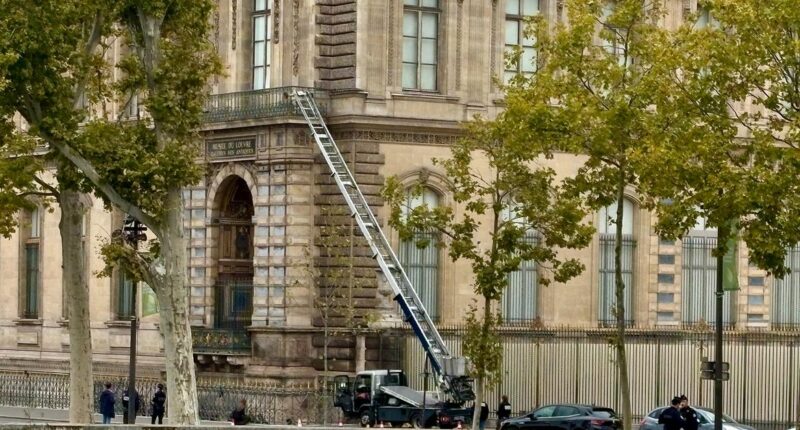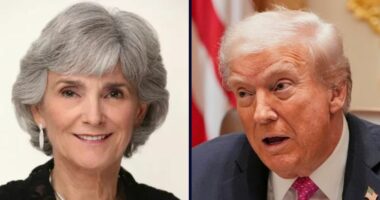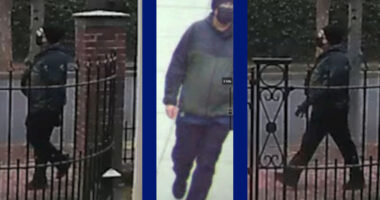Share this @internewscast.com
The recent scandal has unveiled the critical oversight within one of the world’s most renowned museums.
A French court has issued a report criticizing the Louvre Museum’s management in Paris for prioritizing high-profile acquisitions and renovations over the essential security of the expansive establishment.
Last month’s bold daylight robbery, where four individuals made off with invaluable historical jewelry, served as a “deafening alarm signal,” according to Pierre Moscovici, president of the Court of Accounts, which produced the report. He shared these insights with journalists on Thursday.
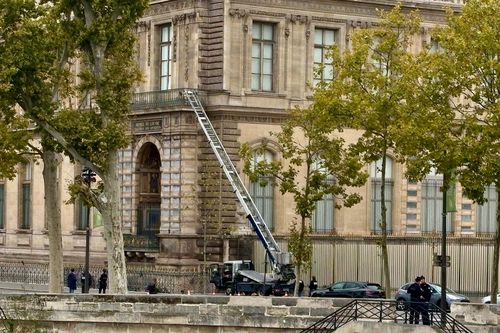
The report, which had been commissioned prior to the October 19 theft, highlighted how the museum’s leaders have focused on “visible and attractive” initiatives, such as acquiring new artwork and redesigning the museum’s layout, while neglecting the critical aspect of security.
Following the heist, it has come to light that security vulnerabilities have been an ongoing issue for years. Notably, a warning from 2014 suggested that one of the museum’s primary passwords was merely “LOUVRE.”
The latest report further illuminates the security shortcomings revealed by this audacious theft.
Within four minutes of arriving at the outside wall of the Louvre, the thieves had scaled the building and were breaking through a window.
Only then were internal alarms triggered.
Four minutes later, after breaking into a reinforced case and grabbing nine pieces of historic jewellery, the thieves were making their escape.

“The weaknesses of the protection of our perimeter are known and identified,” Louvre director Laurence des Cars told French politicians after the heist.
Internally too, the situation seems stark.
For the Louvre’s 465 museum galleries, security staff had only 432 CCTV cameras to monitor the interior last year, according to the report.
While that’s a nearly 50 per cent increase on the number available in 2019, it still left 61 per cent of the galleries without any CCTV coverage.
The world’s largest museum, the Louvre covers some 60,000 square metres.
In comparison, the Detroit Institute of Arts in the northern US boasts a similar footprint (including a theatre and recital hall) but has more than 550 CCTV cameras, according to camera manufacturer Axis.
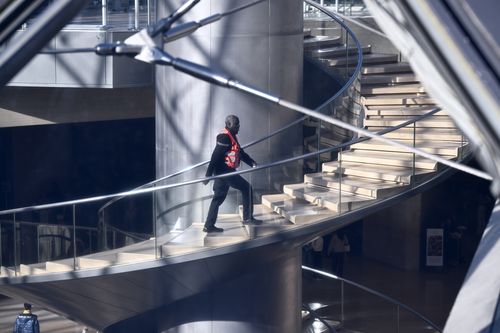
Des Cars told French senators that she envisions a doubling of the number of cameras within the 37-hectare Louvre property in the years to come.
In its recommendations, the Court of Accounts’ report stressed the need for the Louvre to “strengthen its internal control function, which remains underdeveloped for an institution the size of the Louvre.”
The holes in the Louvre’s security weren’t all physical. In the virtual realm its track record left much to be desired.
A 2014 report from the French information security agency (ANSSI) seen by French newspaper Liberation claimed that the password for the server managing the museums’ sprawling CCTV network was simply “LOUVRE.”
Access to software managed by the security technology company Thales was protected by a similarly foolproof password: “THALES” â according to Liberation.
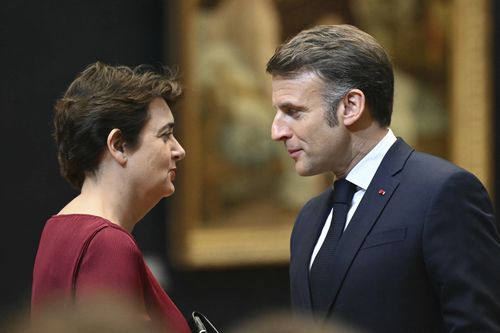
In the security audit, ANSSI reportedly recommended the Louvre boost its cyber security as well as move away from outdated software that could jeopardise its protective stance.
ANSSI did not deny the report to CNN but added that the audit, “cannot be considered representative of the current level of security” of the Louvre’s IT systems.
The report focused on the museum’s budgetary priorities in recent years, which saw some 27 million euros ($48 million) spent on maintenance works between 2018 and 2024, with a further 60 million euros on restoration of the Louvre palace.
In contrast, that period saw the Louvre splash double that figure on altering the museum layout and buying up artworks.
The museum spent 105 million euros on artworks in the six years to 2024, sweeping up 2754 pieces in that time.
In 2021, the Louvre spent some 5 million euros on two works by French Rococo painter Jean-Honoré Fragonard. This April, the Louvre made a 2.2-million euro purchase of an “exceptional” Fabergé triptych.
Many of the Louvre’s purchases are clouded in a certain secrecy, particularly regarding the purchase price. The Court of Accounts’ report said the Louvre should pay greater attention to the price of acquired works and specifically warned the museum against buying art works at a higher price if they were sold at auction for less than two years prior.
In contrast to the focus on glitzy, eye-catching purchases, the damning report notes astonishing delays to work on the Louvre’s security infrastructure.
Recommended security upgrades from a 2015 audit still won’t be completed until 2032, it revealed.
The report examined nearly eight years of museum operations across periods overseen by two executives.
At the time of publication, no executives (or other staff) have been fired or resigned over the theft.
The offer of des Cars to resign as museum director was not accepted by French Culture Minister Rachida Dati.
